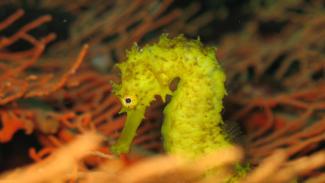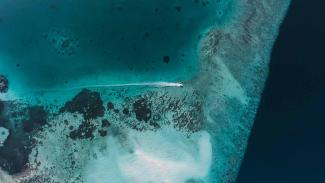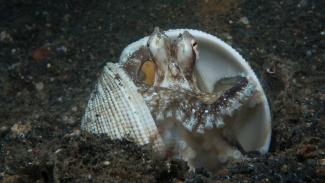
Phil North
It's a tough world out in the seas & oceans. Predators come in all shapes and sizes and use speed, strength, deception and sometimes outright determination to catch their prey.
But its not all bad news for the smaller fish that are vulnerable to attack. They have devised a whole host of cunning strategies to avoid ending up as someone else's lunch.
Some team up with others, while some prefer to go it alone using disguise, deception or good old-fashioned deceit.
Strength in numbers
Schooling
Many smaller fish gather in schools for protection. It may seem a slightly misguided tactic - bringing attention to yourself by gathering in a large group, but strength in numbers is not such a bad thing. Lost within a school of thousands, you would need to be very unlucky to be singled out for lunch.
There is another benefit too though. A seething mass of constantly moving fish has a tendency to confuse predators and thousands of flashing silvery tails can temporarily dazzle the attacker so that they make a blind & badly judged lunge. This strength in numbers tactic is used by many fish, from Glassfish and many other kinds of Baitfish to Snappers & huge schools of Sardines. Even Barracuda school for this reason. Clever hunters, such as Dolphins, can easily defeat this approach, but it still provides successful protection against many would-be predators.
Teamwork
Sometimes, entirely different species work together to avoid becoming prey. A classic example is the partnership between a Shrimp and a Goby. The shrimp is blind, so he cannot see a predator approach. Luckily for him though, he is a very good housekeeper, which is something that is very important to his Goby Guard. The Goby stands on alert in case of a predator, his tail always in contact with his blind housekeeper. If he senses danger, a flick of his tail will warn the Shrimp and they will both dart into the den lovingly prepared by the blind shrimp until the danger is passed.
Big Friends
Some enterprising fish simply make friends with a bigger fish, offering cleaning services in exchange for protection. Many large fish, such as Manta Rays, Sharks & Whalesharks have Remoras in attendance. The Remoras keep these giants free of parasites and in return, they get a free ride and a big scary friend to ward off predators. Pilotfish use the same tactic with many species of Shark and Shrimps often live happily in the lair of a Giant Moray, safe in the knowledge that their services are just too useful to their host to ever be considered prey.
Become Indispensible
Some fish manage to survive simply by being indispensible. Small fish that provide vital cleaning services are valued so highly by potential predators that they are almost immune to attack. Cleaner Wrasse & Cleaner Shrimps run cleaning stations which other fish visit to have parasties removed, avoiding the tempatation to have a snack while they are visiting as the service is so worthwhile. Look on almost any Moray Eel and you will see small Shrimps or Wrasse that seem to flaunt themselves in front of the Moray's open jaws without a care in the world - safe in the knowledge that they are far more useful to their host alive than dead.
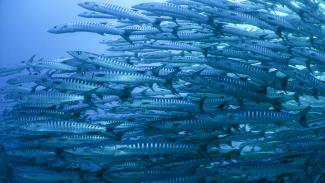
Tara North
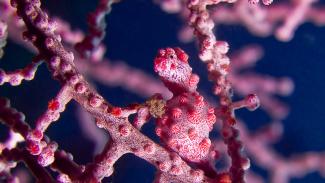
Phil North
You might also enjoy...
The coral reef recipe
Coral Reefs are the most complex and productive of all eco-systems on earth. As divers, we often marvel at the incredibly beautiful and complicated coral reef structures we see and maybe wonder how how they came to be. They have been created over many thousands of years using a complex, unique combination of ingredients and circumstances.
Here is nature's incredible recipe...
Asia's endangered species
Tara North
Asia is home to some of the most diverse habitats in the world, both above and below the water, but it is estimated that more than one in three species are endangered... and the figure is rising alarmingly fast.
Underwater, a whole range of pressures are putting marine life under immense pressure. Intense population pressure is leading to over-fishing, pollution and the destruction of crucial habitats.
Get Involved
Brian Yurastis
Like many people, especially those who dive & love the oceans, you are no doubt concerned by the plight of our oceans and worried what the future may hold. The marine world needs our help, but sometimes it is easy to feel like you can't make a difference.
Fish identification
Christian Gloor



